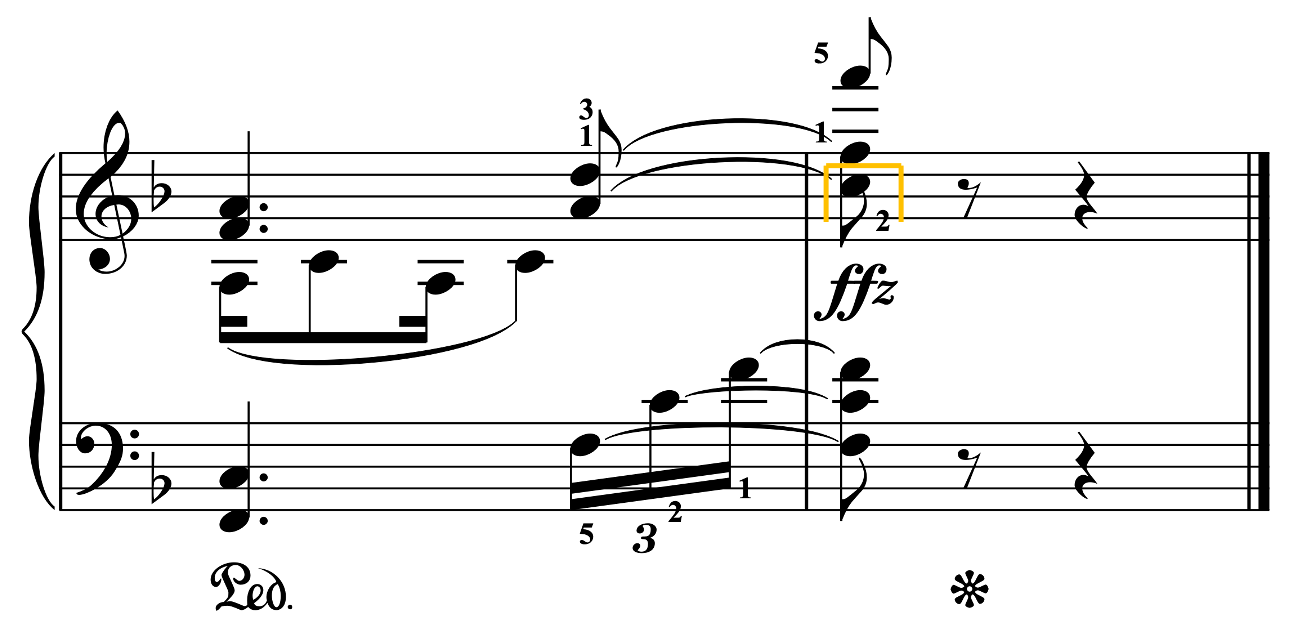Evolution of a Fingering: Price's Dances in the Canebrakes
Finding the right fingering is an experimental process. Sometimes my first instinct proves sound, but if I continue to struggle with a passage, either technically or musically, a change in my fingering approach can often solve the problem.
The final gesture of Florence Price’s “Silk Hat and Walking Cane” from Dances in the Canebrakes is a passage for which I considered several fingerings before finally discovering one that balances technical comfort and the choreography Price intended.
Florence Price, “Silk Hat and Walking Cane,” mm. 110–11, from Dances in the Canebrakes (1953)
The combination of the grace notes in the right hand with the rolled chord and hand crossing in the left hand leaves the timing of this gesture somewhat ambiguous. After trying a few different ways and consulting with a colleague, I settled on this rhythmic realization:
Grace notes and rolled chord realized
Though satisfied that this realization meets the musical requirements of the passage, I found the quick left-hand leap to the high F treacherous. This is the final note of the last piece in the set—I wanted to be sure to end on the right high note! I tried a few different ways and came up with this much more secure fingering:
The right hand takes the top two Fs as an octave and the left-hand crosses to the C. I think this approach is acceptable, strong, and reliable, but I couldn’t help but miss the visual flourish of the hand crossing that Price clearly intended. After a little more experimentation, I came up with this:
In this fingering, the right-hand thumb takes the top F in the bass clef, allowing the left hand slightly more time to leap to the top note. This compromise keeps the exciting choreography of the hand crossing while allowing for a more secure delivery. I’ll take it!




